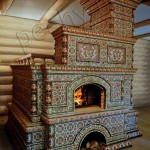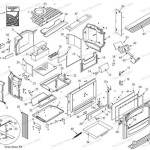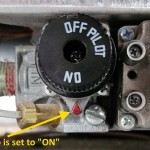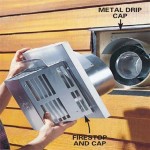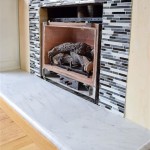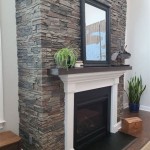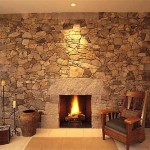Custom TV Fireplace Wall Unit Designs: A Comprehensive Guide
The convergence of entertainment and ambiance has fueled the growing popularity of custom TV fireplace wall units. These installations serve as both functional media centers and aesthetically pleasing focal points within a living space. A custom approach allows homeowners to tailor the design to their specific needs, preferences, and architectural constraints, resulting in a truly unique and personalized addition to the home.
The design process for a custom TV fireplace wall unit is a multi-faceted endeavor that requires careful consideration of various factors. This includes the dimensions of the room, the desired style (e.g., modern, traditional, rustic), the type of fireplace (e.g., electric, gas, or faux), the size and placement of the television, storage requirements, and overall budget. A successful custom design harmonizes these elements to create a cohesive and visually appealing unit that enhances the overall living experience.
Key Point 1: Understanding the Different Types of Fireplaces
The fireplace constitutes a central element of the wall unit, and selecting the right type is crucial. Three primary fireplace options are typically considered: electric, gas, and faux fireplaces. Each type possesses distinct advantages and disadvantages, influencing the overall design and functionality of the unit.
Electric fireplaces offer ease of installation and operation. They require no venting, making them suitable for apartments or homes where gas lines are inaccessible or impractical to install. Electric fireplaces generate heat through electric coils and often feature realistic flame effects, providing a visual appeal similar to traditional fireplaces. They are available in a wide range of sizes and styles, making them a versatile choice for custom designs. However, the heat output of electric fireplaces may be less substantial than that of gas fireplaces, and they typically require access to a dedicated electrical circuit.
Gas fireplaces, on the other hand, offer a more authentic flame and higher heat output than electric fireplaces. They require a gas line connection and venting to the exterior of the home, adding complexity to the installation process. Gas fireplaces are generally more expensive to install than electric fireplaces but can provide a more efficient and cost-effective heating solution in the long run. Furthermore, gas fireplaces contribute a more traditional or luxurious aesthetic to the wall unit design.
Faux fireplaces, also known as decorative fireplaces, provide purely aesthetic value without producing heat. These options are ideal for homeowners who desire the visual appeal of a fireplace without the functional heating aspect. Faux fireplaces often incorporate LED lighting and simulated flame effects, offering a cost-effective and versatile alternative to traditional fireplaces. They are easy to install and require no venting or gas line connections. Faux options unlock unique design opportunities, as they remove restrictions associated with safety clearances and operational requirements.
Key Point 2: Integrating the Television and Storage Solutions
Seamlessly integrating the television into the wall unit design is paramount. Factors such as the television's size, placement, and viewing angle significantly impact the overall aesthetic and functionality of the unit. Common design strategies involve mounting the television above the fireplace, flanking it with storage cabinets, or recessing it within a custom-built niche.
Positioning the television above the fireplace is a popular choice, but it's crucial to consider viewing comfort. Positioning the television too high can lead to neck strain during extended viewing periods. Therefore, careful planning and ergonomic considerations are necessary to determine the optimal height for the television. Heat management is also a key consideration, especially with gas fireplaces. Adequate insulation and ventilation should be incorporated into the design to protect the television from excessive heat exposure. A mantel or heat shield can deflect heat, further ensuring the television's longevity.
Storage solutions are crucial for maintaining a clutter-free and organized living space. Custom TV fireplace wall units can incorporate a variety of storage options, including drawers, cabinets, shelves, and media compartments. These storage elements provide space for concealing media equipment, storing DVDs, displaying decorative items, and organizing household essentials. The style and configuration of the storage solutions should complement the overall design aesthetic of the wall unit.
Designers often integrate shelving into the unit to add visual interest and provide display space. Open shelving allows for the display of books, artwork, and decorative objects, enhancing the aesthetic appeal of the unit. Closed cabinetry, on the other hand, offers concealed storage for items that need to be kept out of sight. Combining open and closed storage elements creates a balanced and functional design. Media compartments are specifically designed to house media equipment, such as cable boxes, Blu-ray players, and gaming consoles. These compartments typically feature cable management systems to keep wires organized and prevent clutter.
Key Point 3: Materials, Style, and Lighting Considerations
The selection of materials plays a significant role in determining the overall aesthetic and durability of the custom TV fireplace wall unit. Common material choices include wood (solid or veneer), MDF (Medium-Density Fiberboard), metal, stone, and glass. Each material offers unique characteristics in terms of appearance, texture, cost, and maintenance requirements.
Wood is a popular choice for its warmth, natural beauty, and versatility. Solid wood offers exceptional durability and longevity, while wood veneer provides a more cost-effective alternative. MDF is a composite material that is often used for constructing cabinets and shelves due to its stability and smooth surface. Metal accents can add a modern and industrial touch to the design. Stone, such as marble or granite, can be incorporated to create a luxurious and sophisticated look. Glass shelves or doors can add a touch of elegance and transparency.
The style of the wall unit should complement the existing décor of the room. Common styles include modern, traditional, rustic, and transitional. Modern designs typically feature clean lines, minimalist aesthetics, and contemporary materials. Traditional designs often incorporate ornate details, classic moldings, and rich wood finishes. Rustic designs emphasize natural materials, such as reclaimed wood and stone, creating a warm and inviting atmosphere. Transitional designs blend elements of both modern and traditional styles, offering a versatile and timeless appeal.
Lighting is an essential element of the custom design, adding both functionality and ambiance. Integrated lighting can illuminate the fireplace, highlight decorative objects, and create a warm and inviting atmosphere. Options include recessed lighting, LED strip lighting, spotlights, and accent lighting. Recessed lighting provides general illumination and can be used to highlight specific features of the unit. LED strip lighting can be used to create a subtle glow around the fireplace or along shelves, adding a touch of elegance. Spotlights can be used to focus attention on artwork or decorative objects. Accent lighting can be used to create a mood-setting ambiance.
The implementation of these design principles requires a collaborative approach between the homeowner and a skilled designer or craftsman. Open communication and a clear understanding of the homeowner's vision are crucial for achieving a successful outcome. A detailed design plan, including drawings and specifications, should be developed before construction begins. This plan ensures that all aspects of the design are carefully considered and that the final product meets the homeowner's expectations. Furthermore, adherence to building codes and safety regulations is vital, especially when integrating gas fireplaces or electrical components.
Ultimately, a custom TV fireplace wall unit represents a significant investment in the home, enhancing both its aesthetic appeal and functional value. By carefully considering the fireplace type, television integration, storage solutions, materials, style, and lighting, homeowners can create a truly unique and personalized focal point that transforms their living space into a comfortable and inviting haven.

Modern Tv Wall With Fireplace Iv Yo Carpentry

Custom Built In Entertainment Furniture And Cabinets With Electric Fireplaces

What Makes A Great Custom Wall Unit Stylish Fireplaces

Custom Built White Wall Unit With Dimplex Electric Fireplace Furniture Design Gallery

Bespoke Media Wall Feature Living Room Luxury Designs

Tv Units With Built In Fires Solutions

What Makes A Great Custom Wall Unit Stylish Fireplaces

Fireplace Tv Wall Unit Remodeling Services Anhle Kitchens

Dagr Design Media Wall Calm Tv Above Linear Fireplace Traditional Gas Ideas Living Rooms Room Decor With

Tv Units With Built In Fires Solutions

